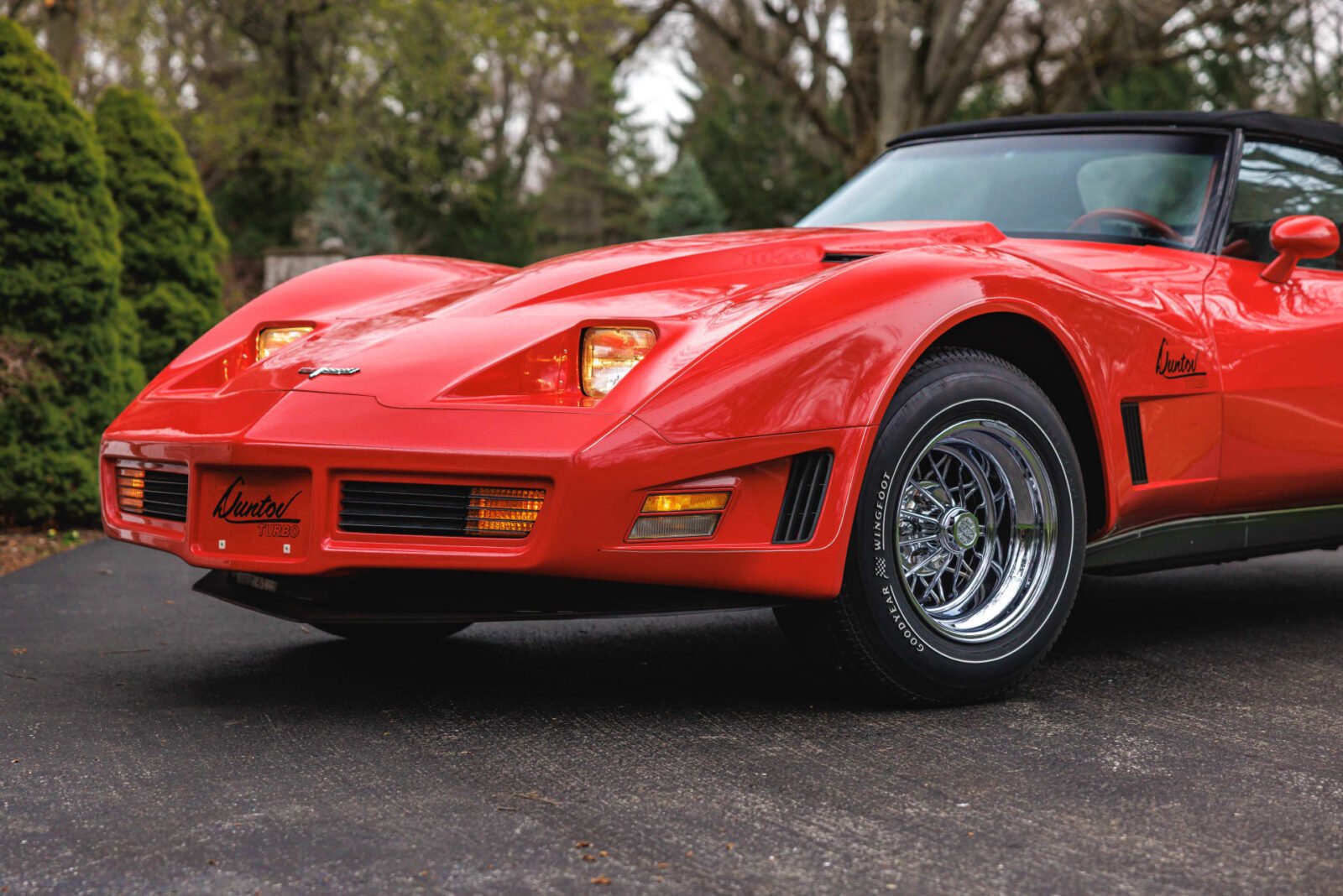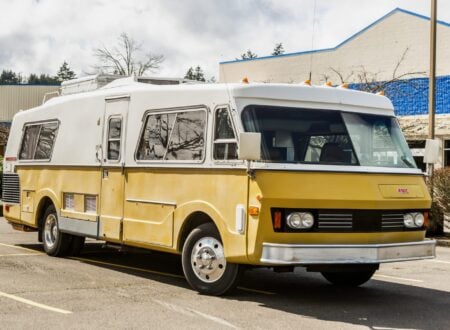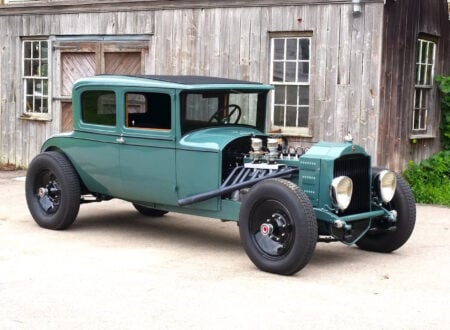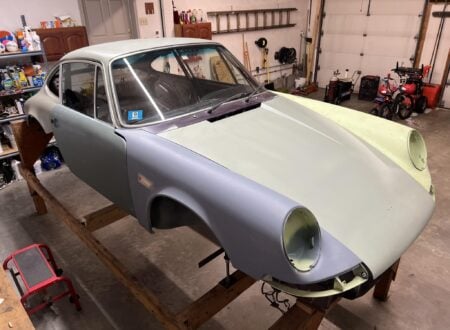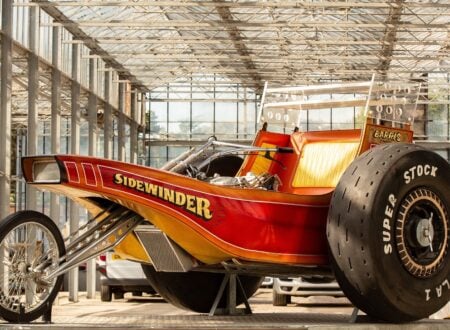This is a 1979 Chevrolet Corvette that was given the professional conversion to “Duntov Turbo” specification in period. These cars were given a broad range of performance and handling improvements, the most notable of which was the fitment of a turbocharger.
This project was overseen by Zora Arkus-Duntov himself, the man known as the “Father of the Corvette” who turned Chevrolet’s sports car into a genuine world-beater in the 1950s and 60s. It’s believed that between 32 and 86 examples of the Duntov Turbo Corvette were built, and they’re now largely forgotten.
Fast Facts – The Duntov Turbo Corvette
- The Duntov Turbo Corvette was a limited-production, high-performance variant of the C3 Corvette, developed with Zora Arkus-Duntov’s direct involvement after his retirement from GM. These cars featured significant upgrades including a turbocharger, reinforced chassis, tuned suspension, widened fiberglass bodywork, and wider wheels and tires – all to improve handling and performance during the performance-restrictive “Malaise Era.”
- Built between the late 1970s and early 1980s, estimates suggest only 32 to 86 units were completed. Each car began as a T-Top Corvette, which was then converted to a convertible using parts from earlier C3 models. The Duntov Turbo nearly doubled the cost of a standard Corvette at the time, limiting its market appeal and contributing to its rarity today.
- Key mechanical upgrades included a Turbo International turbocharging system delivering 4 psi of boost, custom Bilstein shocks, and much wider tires requiring six inches of additional body width. Though no internal engine changes were made, output was rumored to climb from 190 bhp to around 300 bhp—though this figure remains debated due to the modest boost and stock internals.
- Zora Arkus-Duntov, often called the “Father of the Corvette,” played a critical role in transforming the model into a world-class sports car. His contributions spanned from the introduction of the V8 engine and independent suspension to championing Corvette racing. The Duntov Turbo represents one of his final direct contributions to the Corvette legacy, and the few surviving examples are now highly sought after.
Who Was Zora Arkus-Duntov?
Zora Arkus-Duntov, born Zachary Arkus in Brussels, Belgium, on December the 25th, 1909, is widely recognized as the “Father of the Corvette” and a pivotal figure in the mid-20th century American automotive landscape.
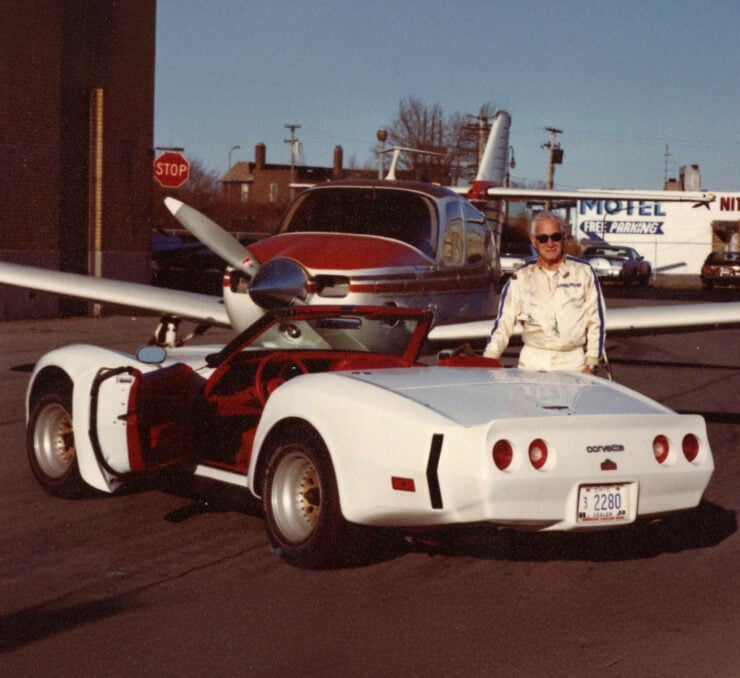

His early life was marked by significant upheaval, with his family fleeing revolutionary Russia before settling in Europe. Arkus-Duntov’s passion for cars and motorsport emerged early, inspired by witnessing racing legends of the day at circuits like Spa-Francorchamps.
After earning a mechanical engineering degree from Charlottenburg Technical University in Berlin, Arkus-Duntov soon became involved in motor racing and engineering. His relocation to Paris saw him begin to collaborate on various automotive ventures, including the development of performance parts for both motorcycles and racing cars.
In 1940, amidst the turmoil of World War II, he and his wife, Elfi Wolff, emigrated to the United States, escaping Europe as refugees.
In America, Arkus-Duntov immediately immersed himself in the local racing scene, becoming an influential figure through his technical writings, his designs for various performance parts, and his achievements as a racing driver on the track.
He wrote a critical letter to Chevrolet in 1953, highlighting performance deficiencies in their newly introduced Corvette sports car. Chevrolet responded by hiring him, which marked the beginning of a development process that saw the Corvette quickly evolve from a boulevard cruiser into a genuinely capable sports (and racing) car.
Arkus-Duntov was instrumental in developing groundbreaking improvements for the Corvette, including the fitment of a V8 engine, fuel-injection, chassis and braking improvements, and independent rear suspension to match the front.
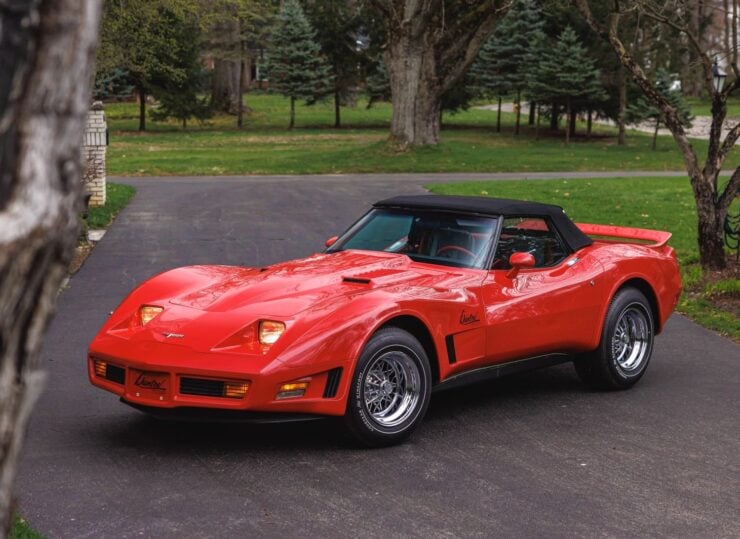
His advocacy for motorsports led Chevrolet to actively participate in competitive racing, both in the United States and across the Atlantic in Europe – significantly boosting Corvette’s credibility with the general public.
Arkus-Duntov’s work culminated in the legendary Corvette Sting Ray of the early 1960s, widely regarded as a high point in American sports car design.
His work ensured Corvette’s survival and success against formidable international competitors like Ferrari, Maserati, Mercedes, Jaguar, Aston Martin, and others. By the time of his retirement from General Motors in 1975, Arkus-Duntov had cemented his legacy as a pioneering force in American sports car engineering.
The Duntov Turbo Corvette
After retiring from Chevrolet/GM in the mid-1970s, Duntov had found himself somewhat at a loose end.
This was also a period when the 1973 Oil Crisis coupled with performance-crushing emissions regulations created what was later described as the “Malaise Era” – defined by large, heavy cars with questionable styling and horrifyingly underpowered engines choked with emissions equipment.
At some point around this time Duntov was approached by American Custom Industries, Inc. (ACI) with an idea to build a powerful, sporting Corvette that would be the true success of the first V8 Corvettes from the late 1950s.
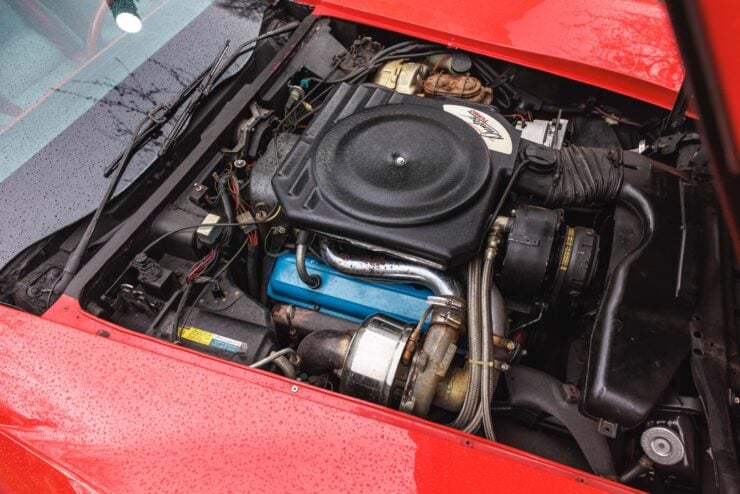

The fundamental plan was to take the then-current C3 Corvette, strengthen the chassis, upgrade the suspension and steering, significantly modify the body, turn it into a convertible (as the original Corvette had been), and add a turbocharger to claw back some of that horsepower lost to emissions laws.
The Duntov Turbo Corvette: Specifications
Each Duntov Turbo Corvette started out as a T-Top C3 which then had the roof chopped, and a folding roof from an earlier C3 convertible added – Chevrolet had stopped making convertible Corvettes after 1975.
The steering box was rebuilt for better steering feel, and new Bilstein shock absorbers were fitted – these had been specially tuned by Bilstein for this specific application. The chassis was given strengthening for better rigidity, and the car was fitted with Weld Wheels shown with Goodyear Wingfoot tires – P255/60 up front and P265/60 in the rear.
These tires were significantly wider than what was offered by the factory, as a result the body needed to be roughly six inches wider. This was achieved by using new fiberglass moldings that were similar to John Greenwood’s original widebody Corvettes, though perhaps a little less extreme in their appearance.
The Fitment Of The Turbocharger
The most significant change was perhaps the one made under the hood, where a turbocharger from Turbo International is fitted, producing 4 psi of boost. The cramped engine bay and the heat produced by the turbo system meant that early prototypes suffered some serious heat-related issues, like melting hoses and plastic parts.
A new hood was developed with vastly improved venting, and the heat issues were largely resolved. Exactly how much power the Corvette’s 350 (5.7 liter) cubic inch small block V8 made with the turbo in place has been the subject of much debate, some say it was as high as 300 bhp – though it’s worth noting that no other changes were made to the engine.
This engine was rated for just 190 bhp in factory-trim, so 300 bhp might be a little aspirational with just 4 psi of boost. That said, forced induction does have a way of surprising people.
Originally it was planned that 201 examples of the Duntov Turbo Corvette would be built, with the first example being delivered directly to Zora Arkus-Duntov himself. Initially, all of the cars were finished in white (like the original Corvette), but it’s known that this color restriction was relaxed during the production run.
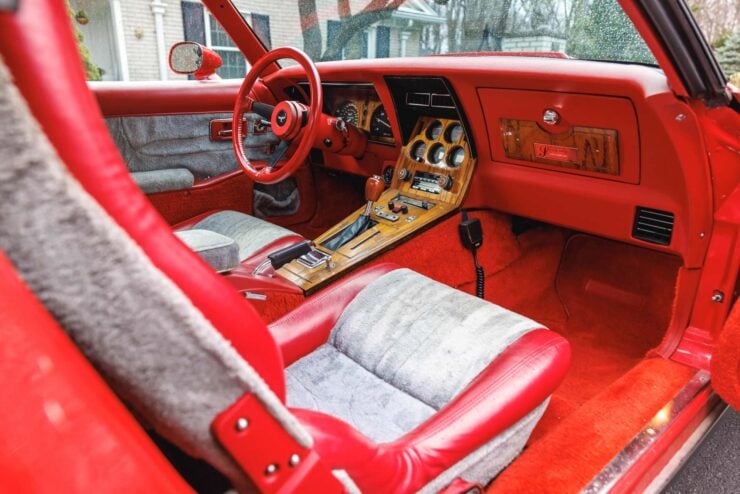

The Duntov Turbo Corvette almost doubled the asking price of a then-new Corvette and as a result, there were relatively few takers. The final tally of completed cars is somewhat hazy due to relaxed record-keeping, but most agree the number was between 32 and 86 completed cars.
The Duntov Turbo Corvette you see in this article is thought to be the only red example that was made. It’s now due to roll across the auction block with Mecum in mid-May with no reserve, and you can visit the listing here if you’d like to read more or register to bid.
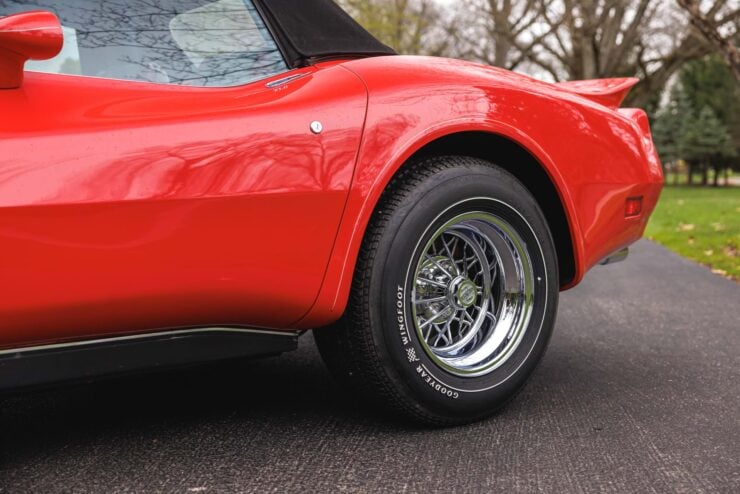
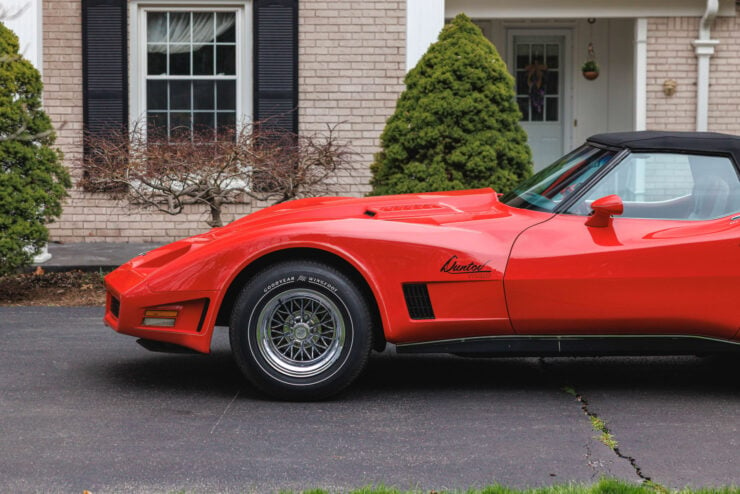
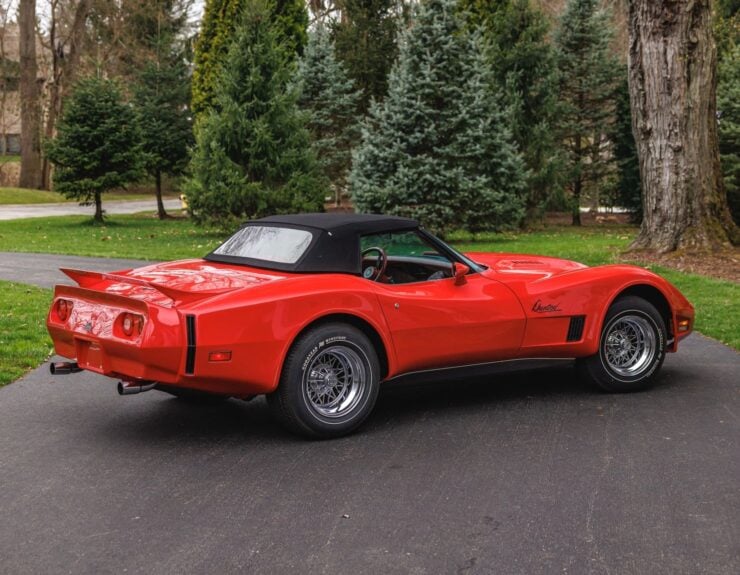
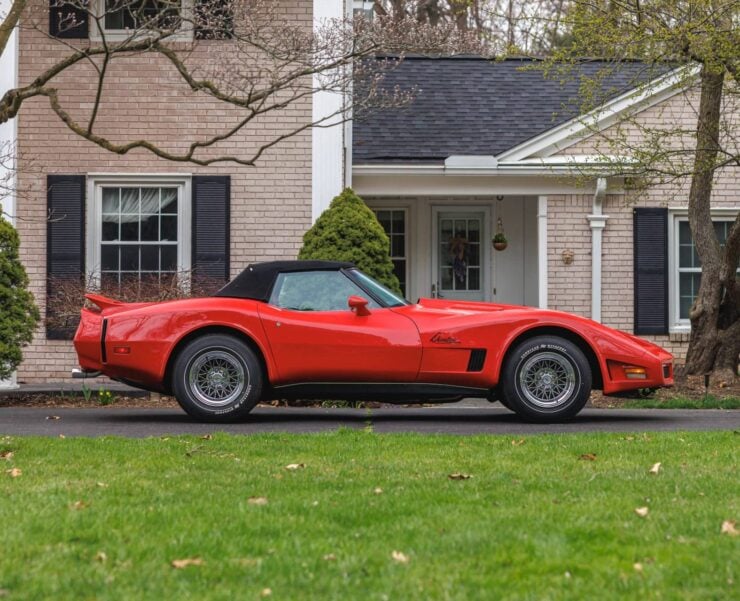
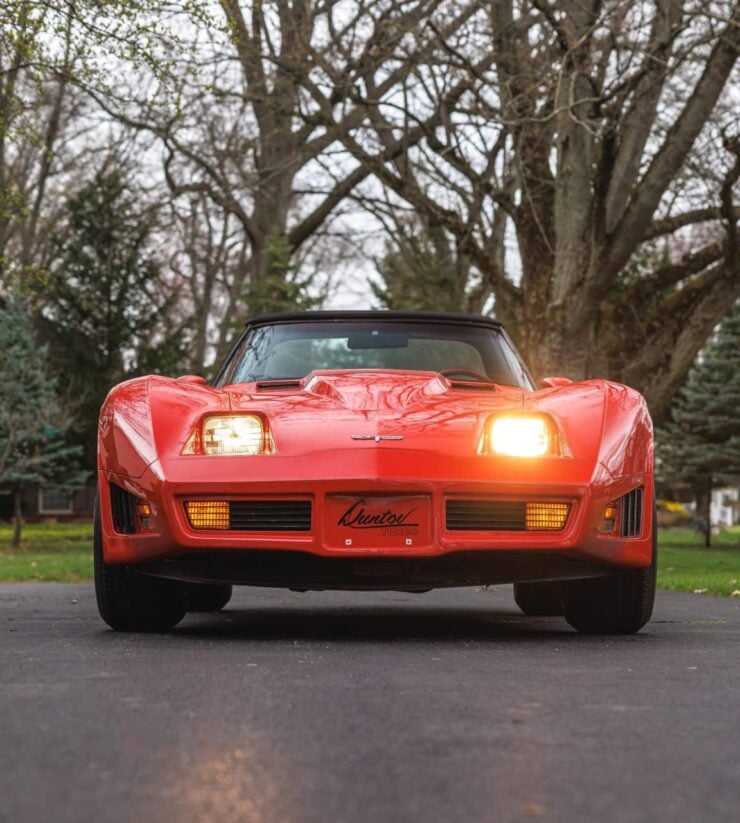
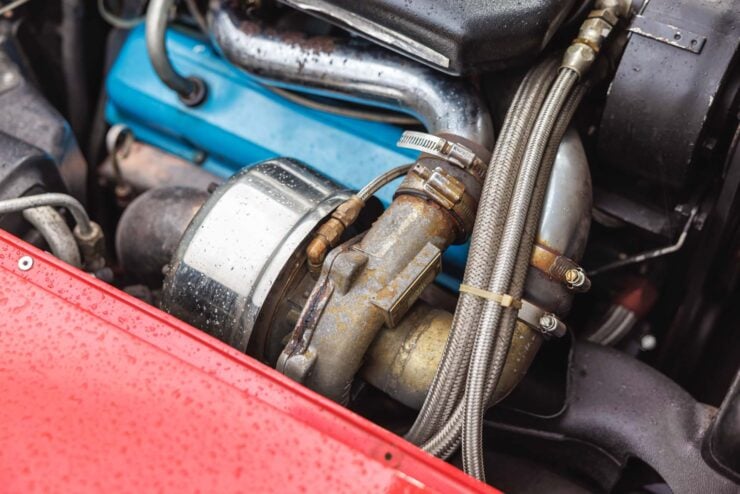
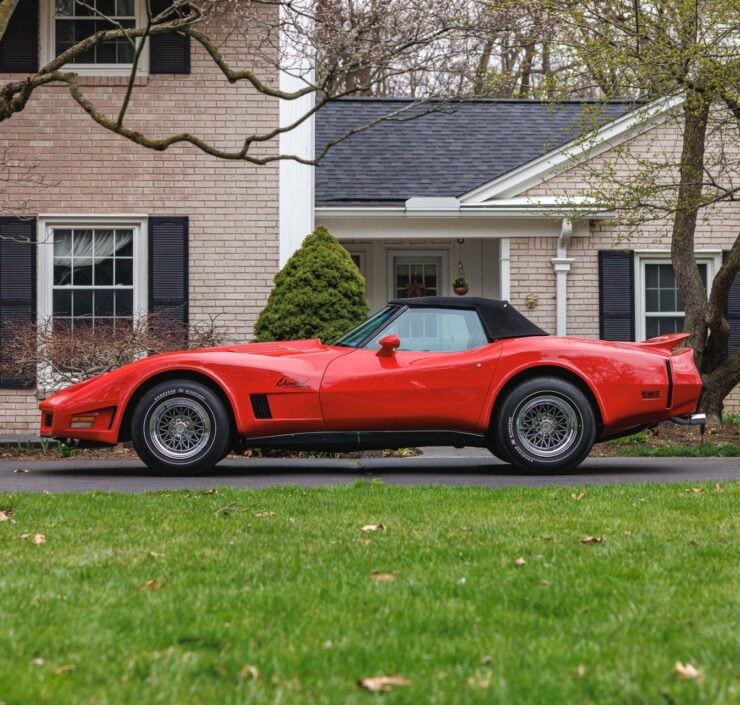
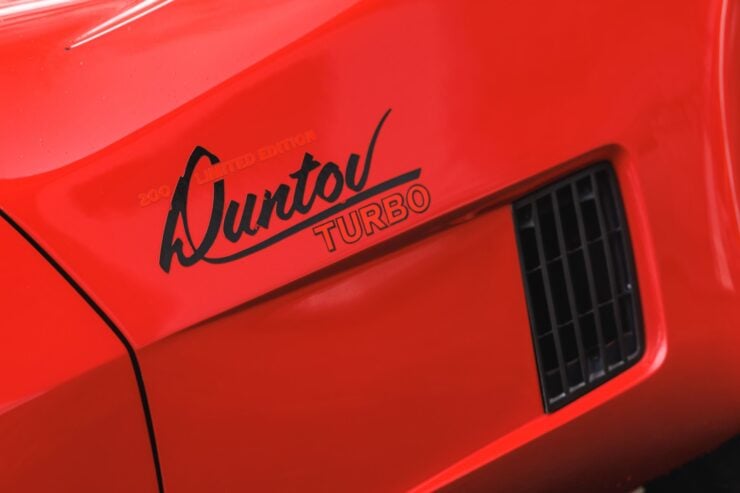

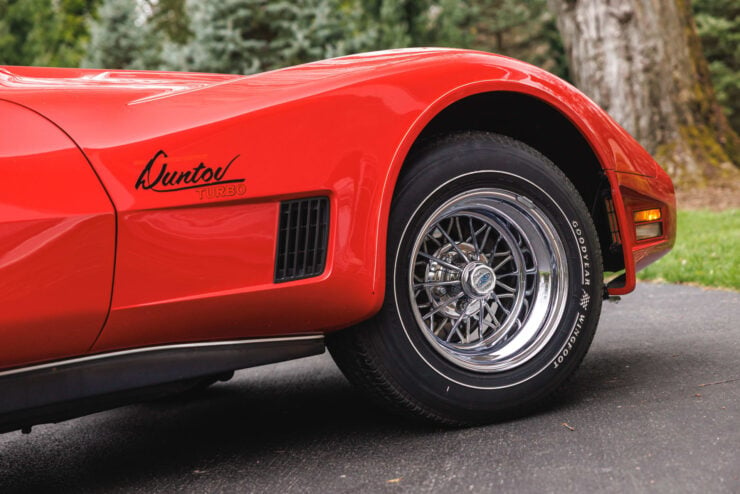
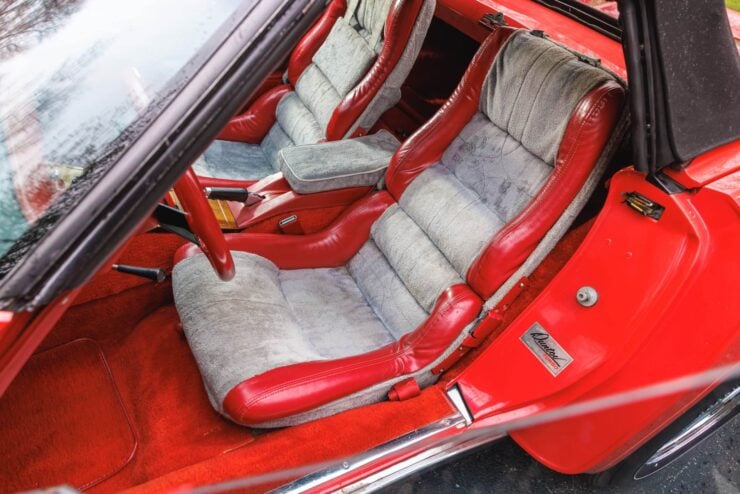
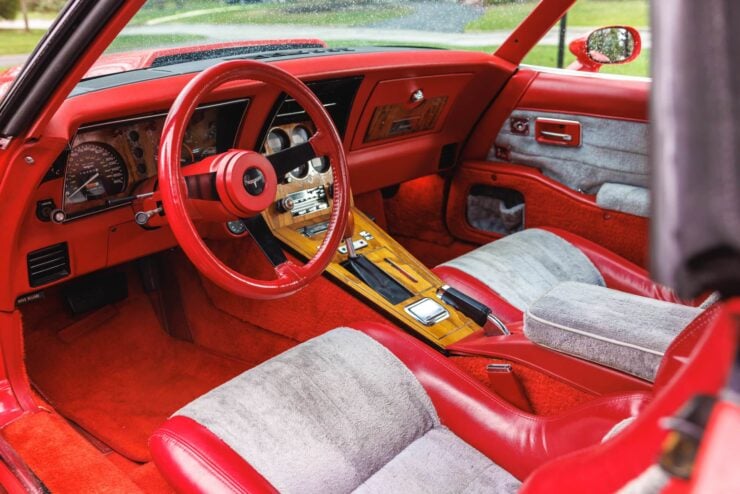
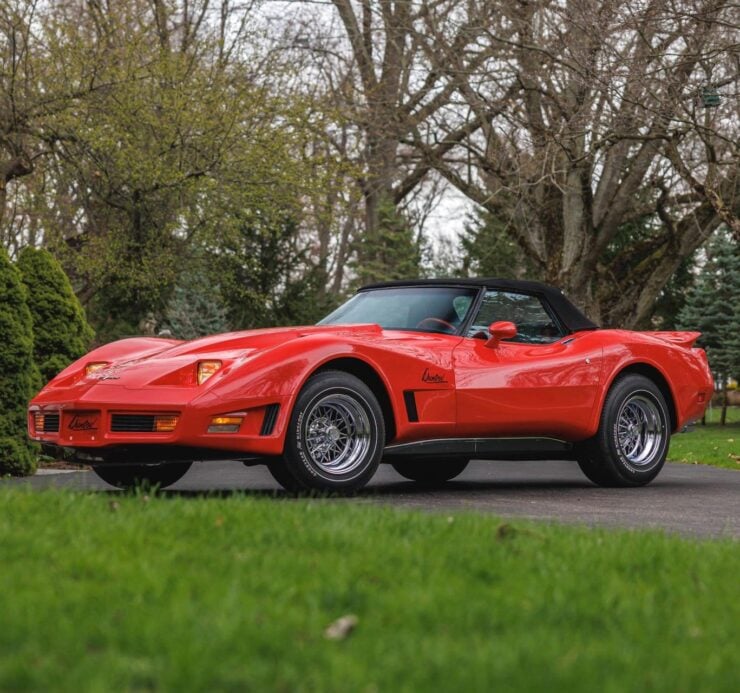
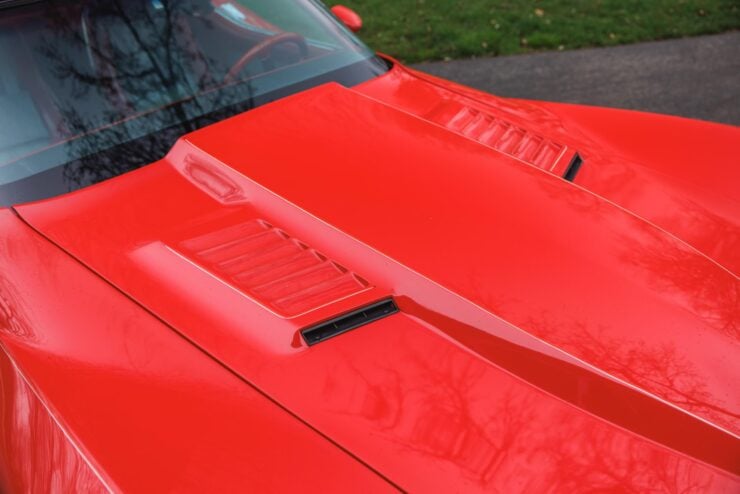
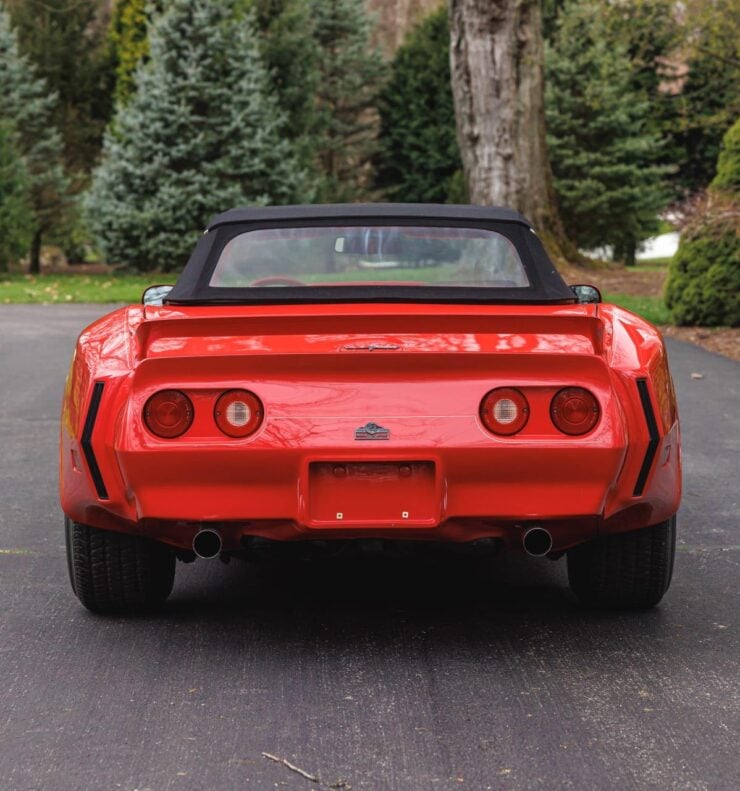
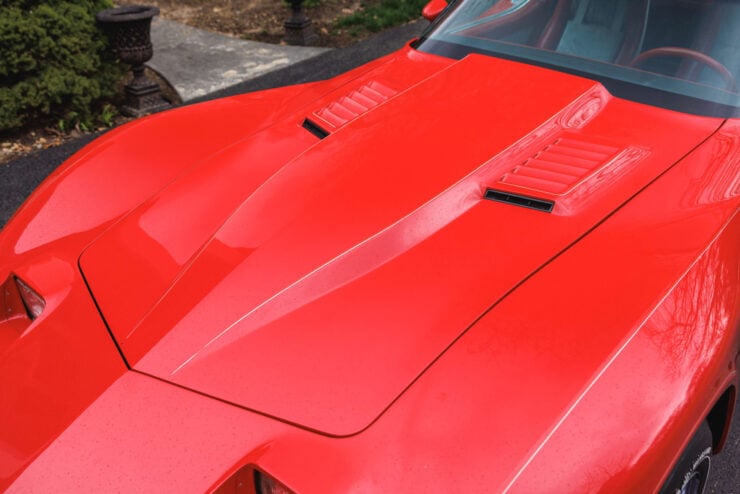
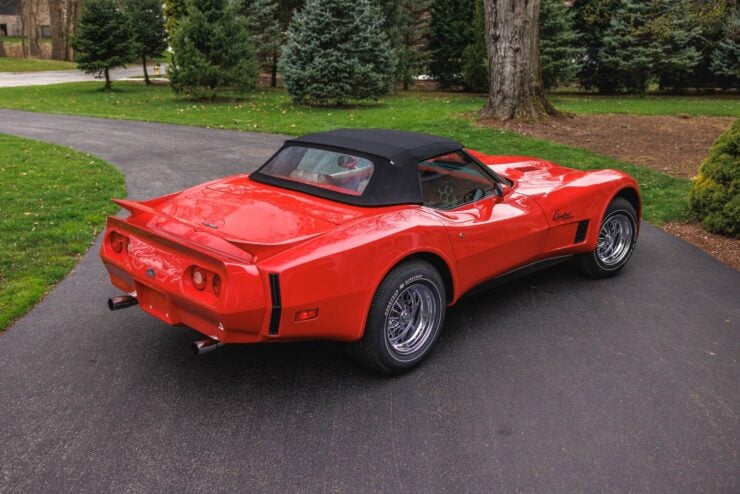
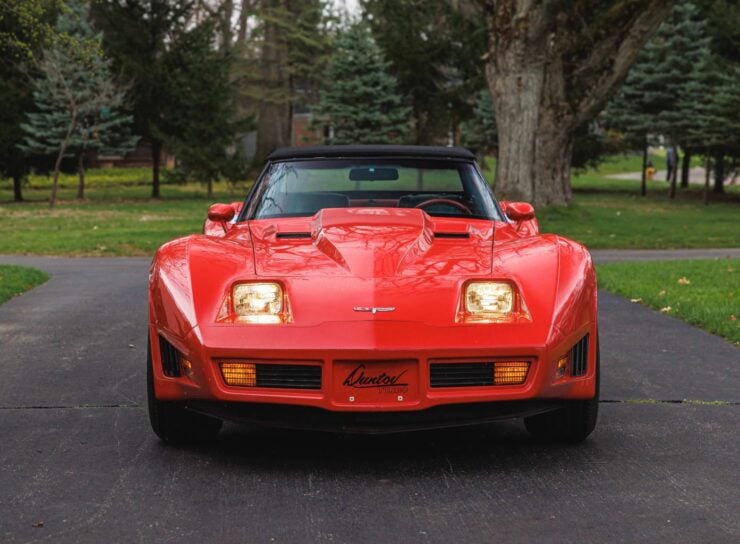
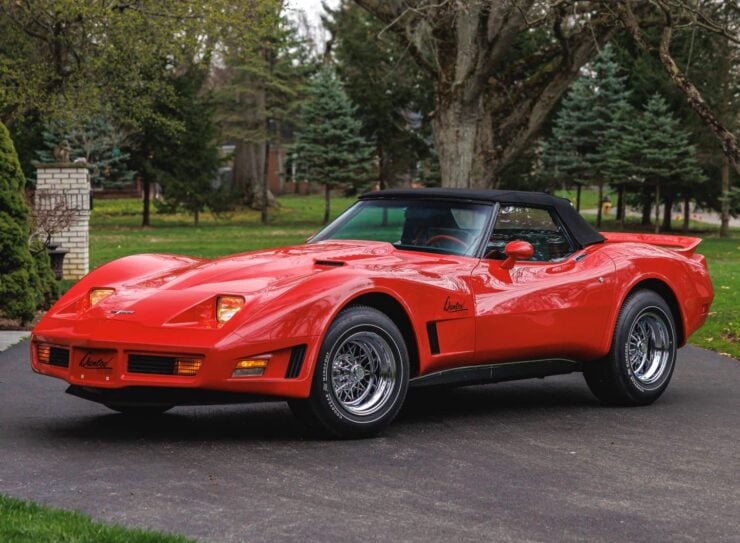

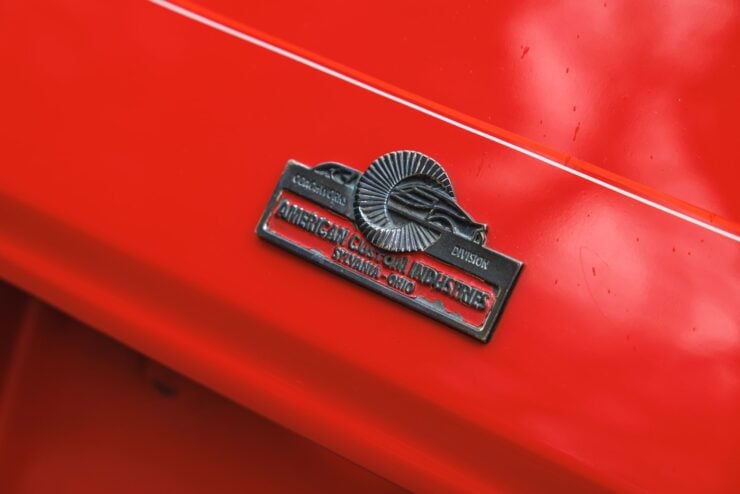
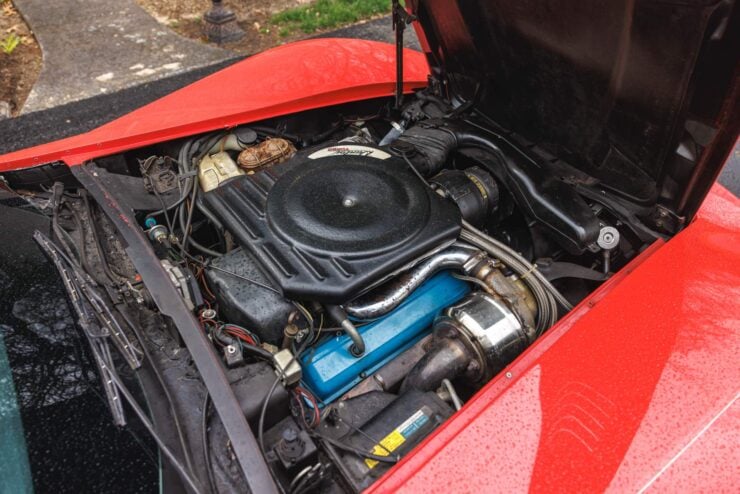
Images courtesy of Mecum

